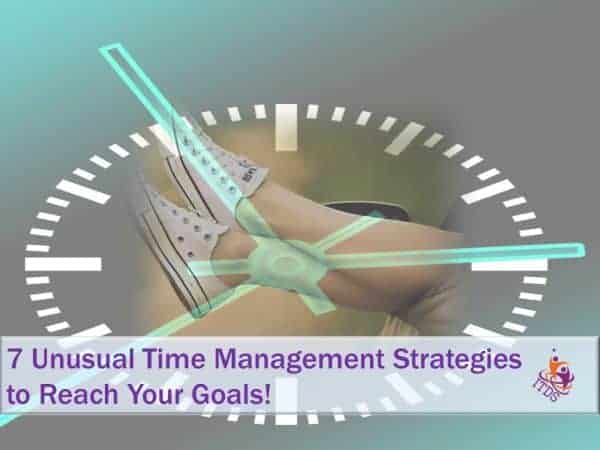
How To Really Improve Your Leadership Problem-solving Process
- Home
- How To Really Improve Your Leadership Problem-solving Process

“Leadership problem-solving process?”
What’s that? And why do you think I would need such a thing?”
As you would expect a good consultant to, I sat quietly and listened to my potential client.
You see, he had contacted me because he was trying hard to build his team.
And according to him, whenever they had a problem to solve, the results were, in his words “mass confusion!”
No wonder he was very sure that the problem was with his team.
That’s why, as we say in our family, he back-flipped through a straw, when I asked him if as the leader, if he had a problem-solving process.
Oh yeah…now I’ve got you wondering about your own leadership problem-solving process.
Don’t worry, I’ve developed one for myself and my clients and I’m quite willing to share it with you.
But before I do, let’s discuss a few things…
What is the problem-solving process?
Well, problem-solving is a journey or a process from a known adverse situation (problem) to an unknown, desired state. (solution)
While many of you have certainly engaged in solving problems already, you have probably used many different approaches in order to achieve a solution.
But armed with a problem-solving process or model, you can more easily and quickly guide your team to solutions that can result in great outcomes for them, your business and for you.
That’s because, a problem-solving process is a systematic approach you can use to identify, analyze, and solve problems.
As a leader, it allows you to apply a focused approach to problem-solving which allows for:
- Decision-making based on information, rather than guessing
- Determining root causes of problems, rather than merely reacting to symptoms
- Devising permanent solutions, rather than relying on quick fixes
Benefits of using a problem-solving process
When you take charge of the way your team solves problems, by using a defined process, here are some of the ways you benefit:
1. Productivity is high. Everyone is focused on the same problem and working towards the same solution, communication is more effective and relationships are stronger.
2. You ensure consistency. Everyone knows what method everyone else is using to solve a problem. Therefore, it keeps the process more scientific and reduces individual biases and perceptions.
3. You get better results. That’s because a process allows you to consider all possible causes of a problem and all possible solutions, using a series of logical steps. In this way, you can select the solution that is most likely to work.
4. You reduce conflict in the journey towards the solution which leads to faster decisions. And the faster you can solve problems, the more space you create for creativity and innovation.
5. You improve your reputation as a leader. The quality of your problem-solving is a great indicator of the quality of your leadership.
Reviewing as many aspects of the problem as you can
As the owner and leader of your small business, when it comes to applying any process or strategy to solving a problem, you have to step back and take a comprehensive view of that problem.
You have to ask yourself questions like:
- Have I seen this problem before?
- Have I solved a similar problem before?
- If the problem is solved, where does that take us?
- What other problems can a solution to this problem prevent?
- What other problems can a solution create?
- What are the possibilities in the problem?
- Will the solution be a good fit for my personality?
- Do I know anyone who have solved this problem before?
- Will I take charge of implementing the solution or leave it to my team?
When you examine the problem in this manner, you place yourself in a better position to lead your team to a meaningful solution.
The leadership problem-solving process
Now that you have addressed a few important preliminaries concerning the whole question of problem-solving, you’re ready for the process which me and my clients find very effective.
1. Assemble your “Solution Team”
This is an important first step.
The team you select depends on factors such as the size of your staff and the nature of the problem.
But another important factor is how well your team will work together. Too much conflict will derail productivity.
2. Make sure you have identified the RIGHT problem
Let me explain why this is important.
Very often, what we might think is the problem can be merely a symptom.
For example, one of my clients described her problem as “front line staff who refused to smile with customers.”
In reality, it was only a symptom of a myriad of HR problems she was having throughout the business.
3. Brainstorm and write down the IDEAL solution
In the first part of your team brainstorming, chances are they will throw up several workable solutions.
The goal here is to evaluate them and select what you and your team consider to be the ideal solution.
Your leadership role here is not to arbitrarily reject any solution or do anything to limit any of the good ideas that your team may come up with.
4. Identify two ALTERNATIVE solutions you can accept
I know you’re thinking, “wait…haven’t I already selected the ideal solution?”
Yes you have.
But in the problem-solving process, anything can go wrong between selecting a solution and implementing it.
Therefore, if you select two alternatives as part of your brainstorming process, you’re ahead of the game.
5. Identify the KEY issues you have to consider before you implement the solution
Contrary to popular thinking, it is not enough for a small business owner to make a decision about the right solution to a problem and then rush to implement it.
You have to identify some key issues first. For example:
1. Who will BENEFIT most from the solution – this is important to increase the likelihood of a successful implementation.
2. Who will be IMPACTED NEGATIVELY by the solution – this allows you to manage risks associated with the solution and to mitigate any unintended consequences.
3. Who can FACILITATE the solution – this establishes clear lines of accountability and identifies specific individuals to be responsible for aspects of the problem-solving process.
4. Who can HINDER the solution -this is where you identify any potential conflict and disruptions that can take your process off track. Negotiation strategies might help here.
6. Identify (and acquire) the RESOURCES you need
Now that you have identified the key issues surrounding your implementation process, you are now ready to identify and acquire the resources you need.
A shortlist of resources could include:
- Financial – money to pay for all the others listed below
- Human – skilled and other support people
- Technological – computers and relevant software
- Physical – workspace, transportation
- Training – new skills
- Communication – marketing, sharing with company-wide colleagues
7. Implement (or begin to implement) the solution
Phew! Finally you are at the place where you’re ready to implement your decision.
But not so fast.
Knowing how to implement a solution is critical to the problem-solving process.
But don’t panic.
You have already done so much of the groundwork already.
Now all you have to do is to come up with an implementation plan. This plan should be the best combination of all the factors you have considered above.
If you have a clear implementation plan, it will allow you to be flexible and adaptable to changes and unforeseen circumstances.
You will also be able to adjust strategies, reallocate resources, and pivot as needed to address evolving needs and challenges.
8. Monitor and course correct as necessary
I promise you this is the last step in the problem-solving process.
But I warn you it’s ongoing…
To protect your business and the investment in the solution, you will have to rinse and repeat this step, as many times as needed.
Be sure to track performance and measure impact. This will help you to continuously improve the process and help you to rapidly scale your business.
Your next steps in the problem-solving process
So there you have it!
A leadership problem-solving process, that if you follow it, can work well for your small business.
If it seems different from those that you’re familiar with, well that’s because it is.
But you can break the rules so you win. Can’t you?
So what do you do next?
Well, the next time you have an important problem to solve, apply this leadership problem-solving process and watch how you lead your team to amazing success!
Video of The Week:
Are you still wondering about starting a new business in 2024? You’re not too late!
In this week’s video, in just about 3.5 minutes, The Young Entrepreneur Forum shares the top 10 trending business ideas in 2024. I could start a business with idea #5…
Watch the video and then check out some great advice on raising money if you want to do so to start that business! Enjoy!
Meet Lorna Barrow

When it comes to helping you grow your small business, develop yourself & your team, Lorna’s got your back!
Follow her on twitter @LornaBarrrow
Join her Facebook Page: Impact Training
Email her at: Lorna@impacttrainingservices.com




